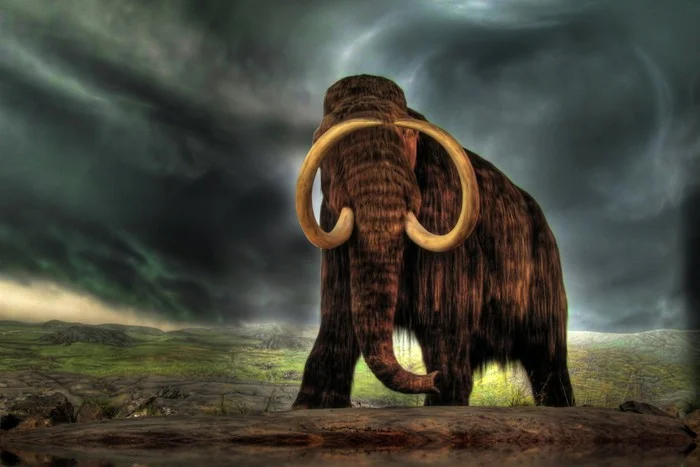A group of scientists analyzed the feeding habits of woolly mammoths, also estimated the amount of biomass in the northern regions and found out how many giants of this species could feed in modern Northern Alaska.
mammoths — The most famous representatives of the ancient megafauna of the Pleistocene. They lived on Earth about five million years ago and became extinct recently. Woolly mammoths disappeared four thousand years ago (the day before yesterday, by geological standards). However, the causes of this extinction are ultimately unclear.
Perhaps climate changes and the end of the ice age regenerated huge tracts of land in the surrounding area, peatlands spread and food became scarce. However, this view is quite doubtful, because 120 thousand years ago the Earth was warmer than today, but mammoths were not extinct at that time. Some researchers place the blame on someone who hunted these giants and reduced their numbers. But most likely this is the combined result of many factors.
The environment in which mammoths lived, often called the “Mammoth Steppe”, is a tundra steppe from the Pleistocene period (2.588-0.0117 million years ago) where grass grows abundantly. Megaherbivorous mammoths are thought to restrict the growth of forests and shrubs, preventing them from closing, fertilizing the soil and promoting the spread of grasses, not mosses. They helped small ungulates survive the winter by crushing the ice crust with their feet. Overall, mammoths were an important sight of their time.
Existing arctic tundras where mammoths once lived are changing due to climate warming. The biomass of shrubs increases and lichens decrease. Generally high plant productivity has been recorded throughout this biome. This is leading scientists to eco-engineering projects to revitalize the arctic ecosystem with its vast grasslands. One way to bring it all back is to revive ancient megafauna, especially mammoths.
But it’s unclear whether ancient megaherbivores could survive in a changing climate. To find out, it is necessary to understand whether modern arctic ecosystems are suitable for the life of mammoths. A group of biologists from the USA, Sweden and Russia decided to check this out. A paper published in the journal Scientific Reports assessed how prepared northern Alaska is for a giant boom.
The authors of the study chose the woolly mammoth (Mammuthus primigenius) as a model species. It was quite unpretentious in food: various analyzes showed that this mammoth ate mainly grass, sedges (highly nutritious) and shrubs. Sometimes tree mosses, lichens (they were poorly digested) and even green algae were added, but this nutrient was excluded from the calculations. The average weight of a woolly mammoth ranged from 3.9 to 5.2 tons.
Northern Alaska is heterogeneous: in addition to tundra, there are swamps, grasslands, rocky slopes and taiga. And different biomes have different amounts of vegetation. Coastal plains and mountains showed the lowest coefficient of aboveground digestible biomass (AgDB – aboveground digestible biomass), and the southern mountainous regions of the taiga showed the highest value. Average AgDB in northern Alaska ranges from 0.0 to 0.62 milligrams per square kilometer (average 0.15).
Based on these data, biologists calculated that approximately 42,000 to 55,000 mammoths could live in modern parts of northern Alaska (average value 49,000). Density is estimated at 0.0-0.38 people per square kilometer (average 0.13). This is 13 times less than before: in the late Quaternary period the density of mammoths could reach 1.7 individuals per square kilometer. It is interesting that another method of calculation gives different figures: from 64 to 80 thousand mammoths, but the authors of the article adhere to conservative estimates.
This study makes several assumptions (for example, it is not clear how adult weights and feeding habits vary from season to season during periods of sexual activity), but overall the results could help chart the colonization of the Arctic by ancient megafauna.
Source: Port Altele
